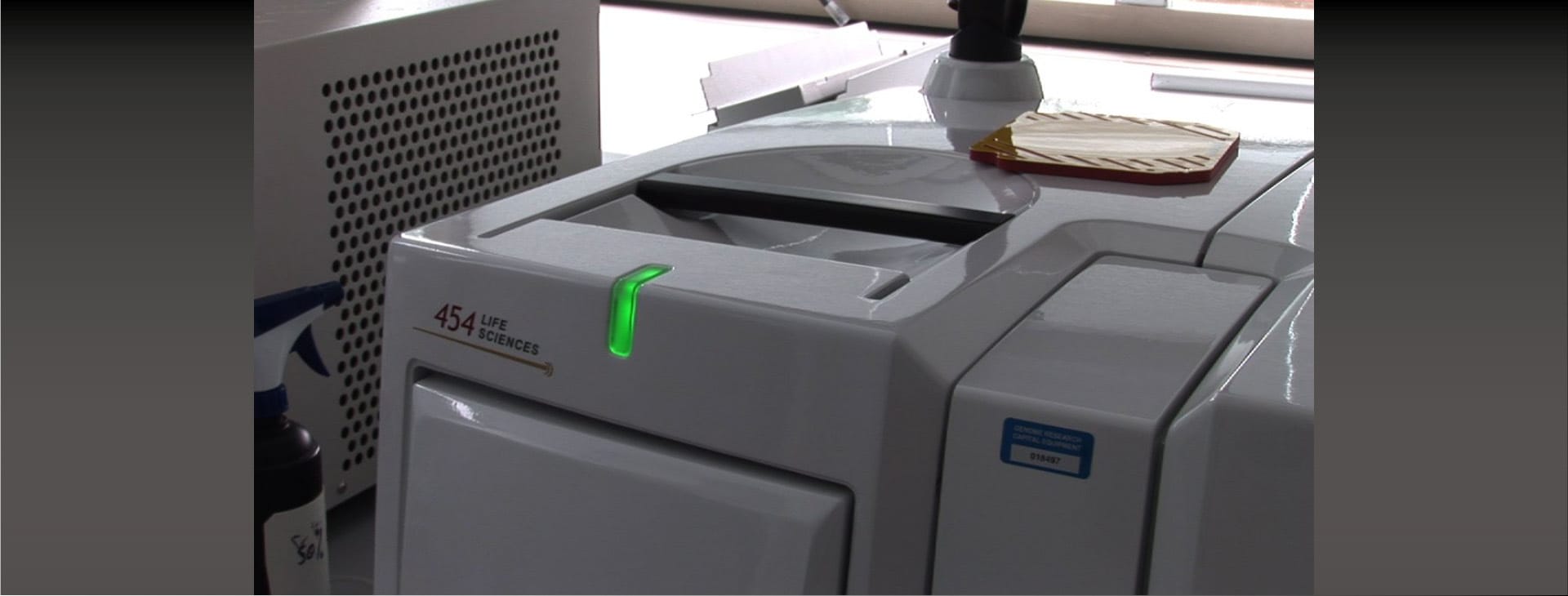What was the 454 method of DNA sequencing?

In 2005, 454 Life Sciences launched the first next-generation DNA sequencer – a big leap forward in DNA sequencing technology that made it possible to sequence many samples simultaneously.
- 454 sequencing was a type of next generation sequencing.
- When it was released in 2005, it could sequence up to one billion bases in a day.
- 454 sequencing stopped being used routinely in the mid-2010s.
What is the 454 method of DNA sequencing?
- 454 sequencing was the first successful next generation sequencing method, developed in 2005 by Roche.
- It was much quicker than the earlier techniques used as part of the Human Genome Project, which took 13 years to sequence 3.2 billion bases.
- Comparatively, 454 sequencing could sequence up to one billion bases in a day.
- However, the platform was not without its weaknesses and it was discontinued in the mid-2010s, in favour of more accurate methods.
How does the 454 method of DNA sequencing work?
- The process begins with a sample of double-stranded DNA. It’s broken up into fragments of around 400 to 600 base pairs using restriction enzymes that cut the DNA at specific points.
- Short sequences of DNA called adaptors, are attached to the DNA fragments. Tiny resin beads are added to the mix with DNA sequences complementary to those on the adaptors are added to the mix.
- The DNA fragments bind directly to the beads, ideally one fragment to each bead.
- When the DNA fragments attach to the DNA on the beads, the bonds joining the double-strand together break, and the strands separate - becoming single-stranded DNA.
- The fragments of DNA are then copied numerous times on each bead by a reaction known as the polymerase chain reaction (PCR). This creates millions of identical copies of the DNA sequence.
- The beads are then filtered to remove any that have either failed to attach to any DNA or contain more than one type of DNA fragment.
- Then, the remaining beads are put into wells on a sequencing plate (one bead per well) along with enzyme beads that contain the DNA polymerase and primer needed for the sequencing reaction.
- The polymerase enzyme and primer attach to the DNA fragments on the beads.
- Nucleotide bases are added to the wells in waves of one type of base at a time: a wave of As, followed by a wave of Cs, followed by Gs, followed by Ts.
- When each base is incorporated into the DNA, light is given out and this is recorded by a camera.
- The intensity of the light corresponds to the number of nucleotides of the same type that have been incorporated. For example, if there are three consecutive As in the fragment, the amount of light generated would be three times that of a single A in the fragment.
- By plotting this pattern of light intensity on a graph, the sequence of the original piece of DNA can be decoded.
What were the benefits and limitations of the 454 method of DNA sequencing?
- Compared to other techniques, 454 sequencing was fast and efficient. It made it possible to sequence a large number of samples at the same time.
- However, it wasn’t without its limitations, including the high cost of reagents and its relatively high error rate. For example, it had difficulty distinguishing the number of bases in a run of identical bases (such as AAAA).
- 454 sequencing was discontinued in the mid-2010s.